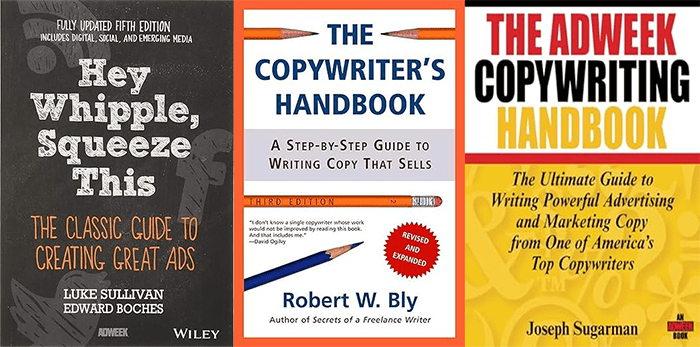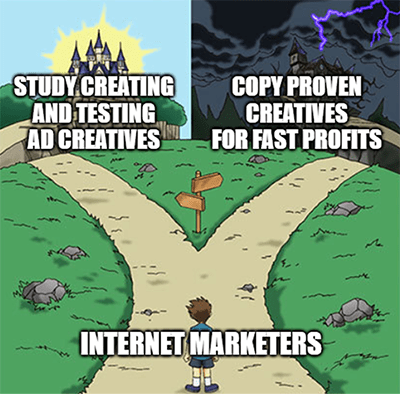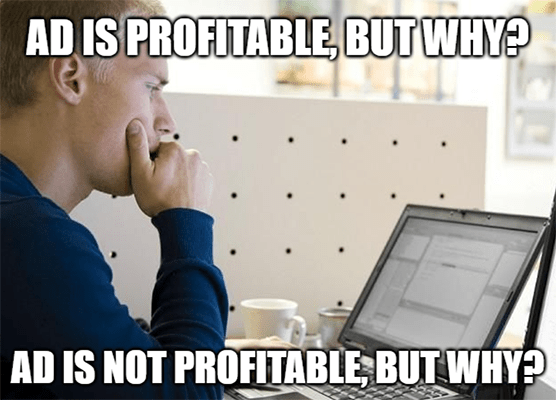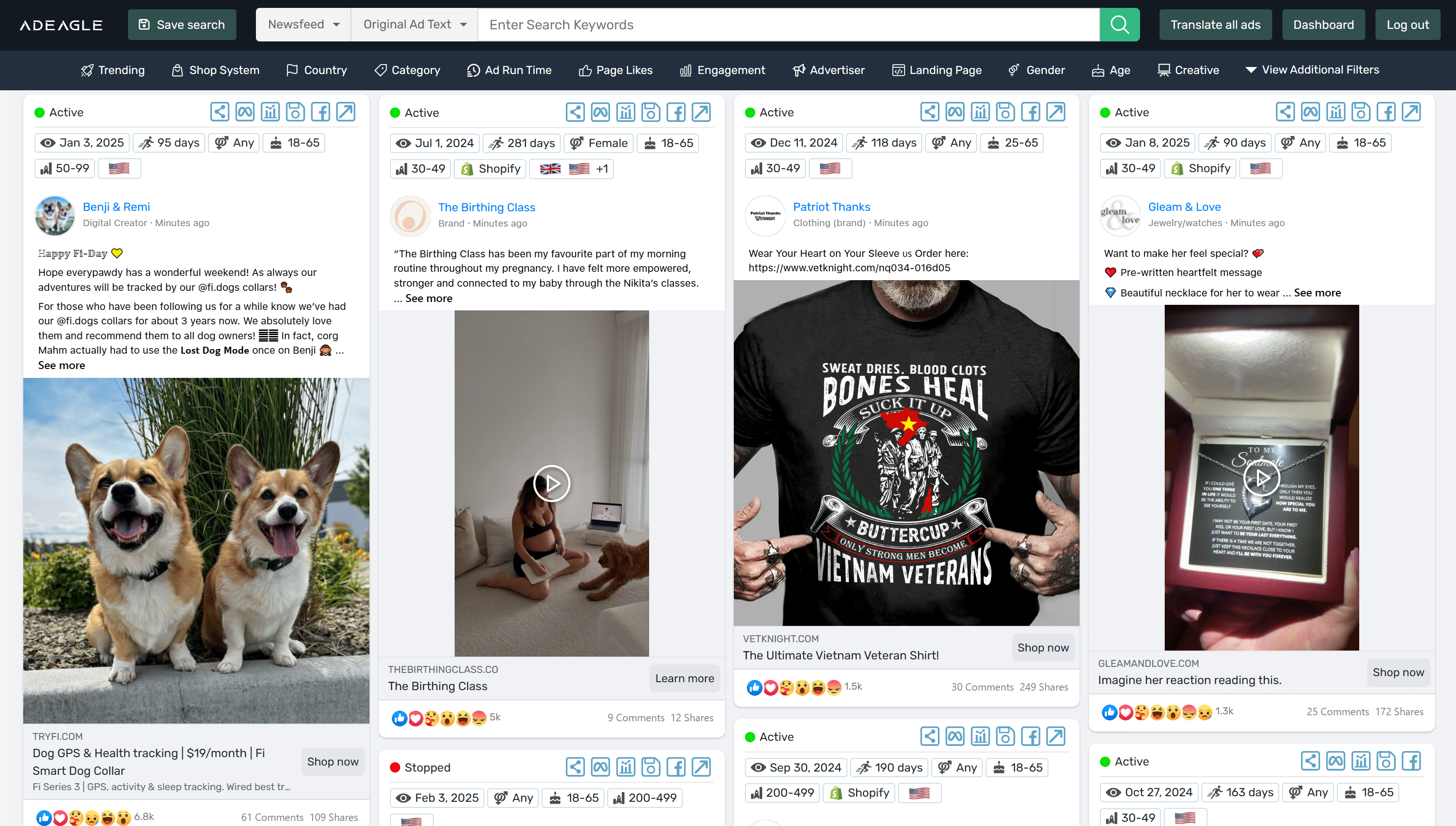
Some consider driving sales with FB ads a form of art. Let’s break it down into a strategy anyone can follow.
The conventional way
If you have lots of time, you should invest some of it into learning how to write a catchy ad copy. Here are a few reputable authors: Hey, Whipple, Squeeze This by Luke Sullivan, The Copywriter's Handbook by Robert W. Bly or The Adweek Copywriting Handbook by Joseph Sugarman.

Since your most visible ad text is your Facebook page name, see if your brand rules allow you any freedom for a creative page naming convention. Most of you will be fairly limited with page names so your only other option is to use text in ad body or text as part of the image or video creative.
Despite creatives being king on Facebook, copywriting skills are still important for your ad and landing page, especially landing page headings, which most people will quickly skim over to see if you product is something they might be interested in.
Learning design
Next comes the creative design. You’ll need to learn how to use at least one video and one photo editing software and study design meticulously. Principles of ad design are the same as principles of a good landing page design. Your goal is to grab attention and succinctly tell your visitor what kind of a problem your product is going to solve for them.
In our humble opinion there is no better teacher of landing page design than Erik Kennedy.
Feeling overwhelmed?
I can already hear you asking: Is there no faster way? Well, yes and no. The good news is, AdEagle is here to help you find ads that work and inspire your creative process with patterns of proven profitability. The bad news is you’ll never learn what your full potential is if you don’t invest sufficient effort in learning copywriting and design from scratch. But maybe you don’t have to. At least not yet.

Fast testing beats everything
Being able to find lots of ideas for ad copy and ad creatives fast and getting them into your ad funnel ASAP will lead to better results than spending much effort on a single starter ad. In this business we tend to focus on quantity over quality when it comes to testing out ads. That doesn’t mean quality can be garbage, just don’t get too hung up on details.
I suggest starting with a simple campaign structure of 2-3 ad sets with a single ad creative in each. Try to test 10-15 new creatives every moth to fight the ad fatigue. To pick your winners reliably, sample size is critical. You typically want at least 3-5k impressions and 40-80 clicks per creative minimum, before you make a decision which ads to scale and which to pause. The more expensive your product, the more data you need in order to make decisions that won’t lead to false positives. Don’t forget to take into account your whole conversion funnel. Every step matter, not just your ad performance alone.
Hot take: you don’t need any creative talent
Being good at creating ads nowadays doesn’t require any special talent, but it does require persistence and quick turnaround time. Finding 10 or 20 successful ads from our system, replicating them in a couple dozen ad variants and quickly testing them is the safest and surest road to profitability.
An ad is nothing without a good landing page, so make sure to give Erik’s Landing page academy course a try.
You can’t skip conversion tracking
Lastly, you have to set up conversion tracking. The reason why it is so important is because Facebook relies heavily on conversion statistics in order to decide who to show your ad to. Only with plentiful conversion data the algorithm can optimize ad delivery so both them and you can earn the most money with the least amount of traffic.
Common reasons for ads performing poorly
If you copied an ad from our system and have a very similar sales funnel to your competitor, the number one reason for ad not performing as good as you expected is Meta’s algorithm received engagement from the wrong initial users and no conversion data as of yet.
Statistical prediction drives most ad algorithms these days. Whatever initial positive data is fed to Facebook, that is what it will try to keep replicating. If the first ad engagement comes from people who don’t make purchases, Facebook will keep sending you more of the same since that is the only indicator of interest they have at that moment. This is why it is crucial to implement conversion tracking and to get at least some conversions early and keep them coming in regularly.

If initially performance is low, often the best course of action is simply duplicating the ad and trying again. You should already be doing that anyways – testing multiple copies and variations of the same ad. Then you keep the best performers and pause the rest. Scaling your ad spend is also better done by increasing your ad/ad set count alongside with bumping up campaign spending. You’ll tend to see ad performance get lower as spending increases so make spending changes in smaller incremental steps.
Other issues that could cause low performance are:
- Ad creative not being relevant enough to your sales funnel.
- Ad design addressing the wrong group of people. Ironically, whomever your ad speaks to is more important than your campaign targeting settings.
- Ad fatigued the audience and they stopped responding to it. That can happen when ad has been running for too long or the audience sample was so small that it got saturated quickly.
Ideal path
Until you know how to reliable create great ads, you should stick to copying the best of them. The question is, who you are going to copy while you learn your craft?

AdEagle will help you find best performing ads and if you learn more about ad design on your own time, you’ll also learn why they work so well. You don’t need to know that right away to turn your first FB PPC profit, but I hope you’ll want to, once you see the results of simply spying on competitors Facebook ads.